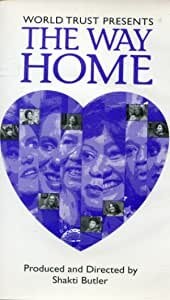
The Way Home 1998
Distributed by New Day Films, 22D Hollywood Ave., Hohokus, NJ 07423; 888-367-9154
Produced by World Trust and Shakti Butler
Directed by Shakti Butler
VHS, color, 92 min.
Adult
Multicultural Studies, Women's Studies, Sociology
Date Entered: 11/09/2018
Reviewed by Oksana Dykyj, Head, Visual Media Resources, Concordia University, MontrealAccording to the accompanying literature, The Way Home provides a model for dialogue as well as for deep learning and healing by listening to the voices of women from a cross-section of cultures as they share their experiences of systemic oppression through racism. The 18-page Heart-to-Heart Conversation guide advises the use of the video as a tool for extending the on-tape conversations into a real setting allowing for transformative learning, that is to say, experiencing a deep shift in our basic thoughts and feelings. To this end, the suggested conversation questions ask the viewers of the video to continue working within the confines established in the video and to identify with the women in the video.
Technically, the video presents some problems. The decision to use the left and right stereo channels independently causes some confusion as the levels are not optimally mixed or equalized thus creating tracks that are disconcerting. Similarly, the over-emphasis on reaction shots of women nodding in approval as the speaker talks, gives the impression of the type of spatial incongruity that results from one-camera shooting even though a second camera credit is listed at the end of the film. Finally, it is surprising to see the insertion of a map depicting Eastern Europe in which the former Soviet Union is still shown as it might be construed as displaying a level of insensitivity which should not be present in a film against racism.
Although important issues are brought up in The Way Home, they are not explored in any way outside being mentioned as anecdotes. Topics such as racial/gender inequities in the educational system are only mentioned as examples from the lives of the women and dropped in order to go on to a few minutes of examples of other topics like internalized racism. This process is unfortunately superficial. The anecdotes are familiar, they have been told in different forms of fiction and non-fiction films during the last 30 years. Had this film been made 30 years ago, it would have been understandable as a product of its time. But for a contemporary work, the video lacks critical analysis, ideas, and theories. Neither the conversation guide nor the video successfully set the stage for the most constructive dialogue on race issues as neither is able to go beyond anecdotal information to synthesize the experiences into concepts for discussion. Not recommended.